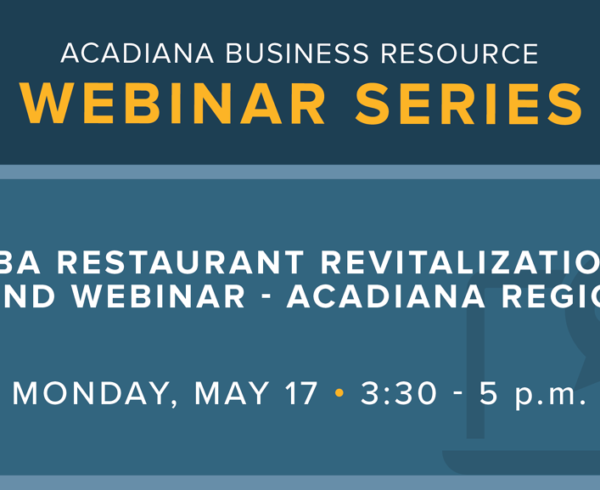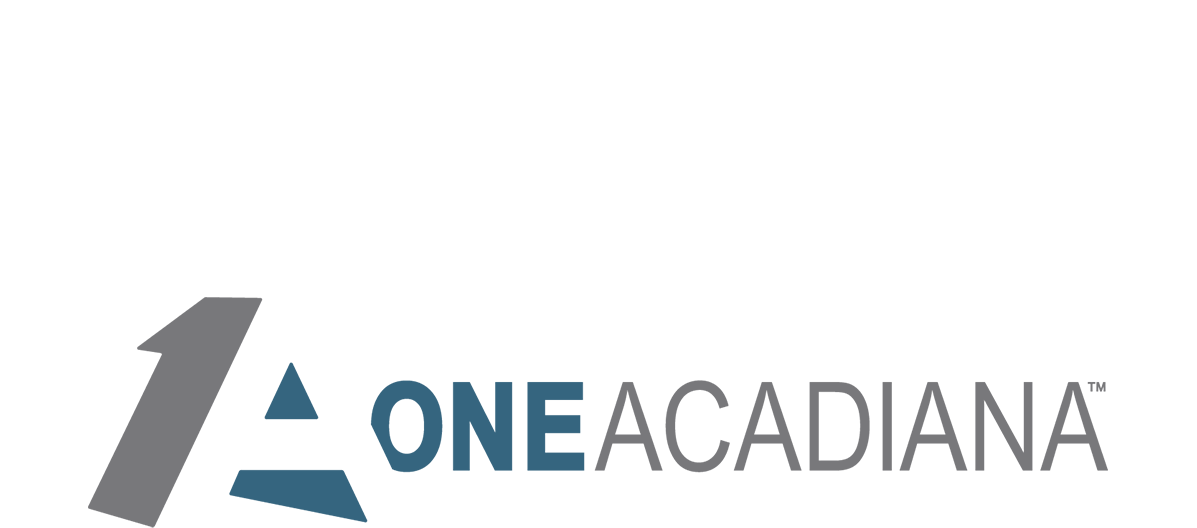Hurricane Ida slammed Southeast Louisiana on August 31, 2021, sixteen years to the date after Hurricane Katrina devastated the same region. As many communities begin the often long process of cleaning up the damage done by these storms, it is important to be knowledgeable on correct procedures to properly restore normalcy. LSU AgCenter offers these helpful hints to help anyone who is cleaning up after a disaster, modelled after the U.S. Department of Housing and Urban Development’s “Rebuild Healthy Homes: Guide to Post-disaster Restoration for a Safe and Healthy Home,” a free online manual.
Water Safety
For instructions on water safety and purifying water, follow guidance from your community water supplier or department of health.
Water Well Purification
After a flood, it is important to take every precaution to ensure the safety of your well water. First, it is necessary to inspect and clean the well and pump before using them. You may want to have your water well contractor check the well before using it.
Have the water sampled and tested. The water IS NOT safe for drinking until lab results show no indication of total coliform bacteria. You can discuss the final lab results with the lab or local public health unit. It is important to remember that disinfection or boiling water will not remove chemicals that may have contaminated your well during a flood.
Foods and Food Preparation Items
- Do not eat food that may have come into contact with floodwater.
- Discard all food that came in contact with floodwaters, including canned goods. It is impossible to know if the containers were damaged and the seals compromised.
- Discard wooden cutting boards, wooden spoons, plastic utensils, baby bottle nipples and pacifiers. There is no way to safely clean them if they have come in contact with flood waters.
- Thoroughly wash metal pans, ceramic dishes and utensils with hot soapy water and sanitize by boiling them in clean water or by immersing them for 15 minutes in a solution of 1 teaspoon of chlorine bleach per quart of water.
- Clean and sanitize all kitchen surfaces.
- Wash and sanitize dishes, utensils and appliances.
Assessing Damage and Dangers
Never enter a building that ight have structural damage. Look for signs, such as cracks, sagging rooflines, leaning, and foundation shifts. Make sure electrical and gas supplies are disconnected and inspect for chemical contamination and biohazards. Be alert to possible invasion by snakes, fire ants and other creatures.
Avoiding Lead and Asbestos Hazards
Warning! If your home was built before 1978, it may contain lead-based paint or asbestos containing materials. Disturbing lead and asbestos materials during cleanup and restoration can create very serious and long-term health hazards. Even tiny amounts of lead dust can cause irreversible damage to children’s developing brains and hearing. It can also harm adults. Asbestos fibers can cause lung cancer.
Do not gut walls or remove damaged materials before learning about lead and asbestos safe work practices, or before getting a hazard assessment by a qualified professional. Refer to the “Rebuild Healthy Homes” guide, EPA Lead and EPA Asbestos for more information and to find qualified professionals.
Also, hire only EPA lead-safe-certified firms to repair and restore a pre-1978 home. All contractors who do any work that could disturb paint in pre-1978 homes are required by law to be certified.
Avoiding Mold Hazards
A flood-damaged building requires special attention to avoid or correct a mold population explosion. Molds produce spores that float and spread easily through the air, forming new mold growths called colonies when they find the right conditions–moisture, nutrients and a place to grow.
Mold problems can result in damage to materials and health. The longer mold is allowed to grow, the greater the risk and the harder it is to remedy. As soon as the floodwaters recede and it is safe to return, don’t delay cleanup and dry out.
People are mainly exposed to mold by breathing spores or fragments but can also be exposed through skin contact. Wearing gloves, goggles, and a respirator that can filter mold spores (rated N95 or better) is strongly recommended. Note that a dust mask is NOT the same, and does not provide adequate protection.
Although there is wide variation in how people are affected by mold, long-term or high exposure is unhealthy for anyone. Exposure to mold can trigger allergic reactions and asthma attacks and may suppress the immune system or have other effects. Some types of mold can produce mycotoxins in certain conditions, which can be present in live and dead spores and fragments in the air. “Black mold” is a misleading term because many types are black and many species of mold can produce toxins.
Mold testing is not usually needed and is rarely useful. Some insurance companies and legal services may require sampling as a form of documentation. Professional mold remediation contractors may test before and after cleanup to provide evidence of the cleanup’s effectiveness. Otherwise, if you see or smell mold, you have mold and should remove it as soon as possible.
A properly trained mold remediation contractor with specialized equipment can provide the safest and most effective result. In Louisiana, find licensed mold remediation contractors here.
If you need to clean mold, follow these steps and refer to EPA guidelines online at EPA Mold to do it as safely and effectively as you can.
- Wear protective gear: Always wear a respirator NIOSH rated N95 or higher when inside a moldy space. During cleanup, also wear gloves and goggles. Go outside frequently to breathe fresh air. Some types of respirators have valves to make it easier to breathe. A properly fitted N100 half-face or full-face respirator with filter cartridges provides greater protection and comfort than the mask types.
- Isolate work area and ventilate to outdoors: Disturbing mold colonies during cleanup can cause a huge release of spores into the air, so seal off the moldy areas from the rest of the house. Open windows and don’t run the central air system during cleanup. Tape plastic over air grilles, and drape plastic in the stairwell if the second story is dry and clean. If power is on, put a box fan in a window to blow outward and exhaust mold-filled air to the outdoors.
- Remove moldy porous materials: Moldy or sewage-contaminated porous materials should be removed and put in plastic bags, if possible, and then thrown away. To reduce the release and spread of mold spores, it is helpful to cover moldy material with plastic sheeting before removing it. IMPORTANT: Use lead-safe work practices in pre-1978 homes.
- Remove all flooded carpeting, upholstery, fabrics and mattresses right away. It’s best to discard them, but if you hope to salvage a valuable item, have it cleaned, disinfected and dried quickly outside the home. Never reuse flooded padding.
- Remove all wet fibrous and open-cell foam insulation–even if wallboard appears to dry. Wet insulation will stay wet far too long, leading to the growth of hidden unhealthy mold and decay fungi inside the walls. Cut wall covering above the level that was wet. Insulation can wick water up above the flood level.
- It’s best to remove all moldy, porous materials, including paper-faced gypsum wallboard and floorings, ceiling tiles, paper products and processed wood products, such as particle board and chip board. This is especially true if there is heavy or long-term mold growth. However, solid wood products may be saved.
- Plaster, wood paneling and non-paper-faced gypsum wallboard that have dried, are in good condition and have no insulation in the wall may be cleaned and sanitized. There is a risk of mold on the backside that can release spores into the home through air leaks in the walls. If you choose to restore these materials, try to seal all interior gaps airtight before repainting.
- Remove all vinyl wallpaper and any other materials that hamper drying of framing and subfloor or slab toward the interior space. All interior side plastic sheeting, foil-faced insulation and anything else that can act as a water vapor barrier should be removed.
- Clean and disinfect: Surface mold can be effectively cleaned from non-porous materials, such as hard plastic, glass and metal. Concrete and solid wood can also be cleaned because mold cannot penetrate solid wood and grows only on the surface. Cleaning should remove–and not just kill–the mold because invisible dead spores and any toxins they may contain can still cause health problems. You may choose to use a disinfectant to kill any mold missed by the cleaning. If there was sewage contamination, disinfection is a must. Disinfectants also pose health and safety risks, so always read and follow label directions and warnings. Handle disinfectants carefully, wear rubber loves and never mix bleach with ammonia or acids. Many disinfectants, including bleach, can kill molds but do not prevent regrowth of new colonies.
- Remove any sediment. If necessary, hose out opened wall cavities.
- Wash dirty or moldy materials with non-phosphate all-purpose cleaners because phosphate residue is mold food. Rough surfaces may need to be scrubbed. Rinse, but avoid high pressure spray that can force water into materials.
- If available, use a HEPA-filtered vacuum, not a regular vacuum, to remove dust and mold residue.
- Disinfect wall cavities and other materials after cleaning to kill any remaining fungi and bacteria. Soil can make some disinfectants, including bleach, less effective. On colorfast, non-metal surfaces, you can disinfect with a solution of one-half cup concentrated household chlorine bleach per gallon of water. Do not use bleach in the air conditioning system. Common milder, less corrosive and safer disinfectants include alcohol and hydrogen peroxide.
- Consider borate treatment: While wood framing is exposed is a valuable opportunity to apply a borate treatment for adding resistance to termites, decay and mold. The type of borate solution that can penetrate wood over time is more expensive but offers greater protection. Other products such as latex zinc and fungicide coatings may also help inhibit mold growth during drying. Do NOT use sealants or coatings that can hamper drying.
- Flush the air: After cleaning and disinfecting, air out the building. Place fans in windows and aim them outside to pull mold spores to the outdoors.
- Speed dry: Quickly dry all wet materials, including the concrete slab. Close windows and use a combination of dehumidifiers, fans and air conditioning or heat, if possible, to maintain 30 to 50 percent relative humidity to pull moisture out of materials without over-drying them. If you can’t get dehumidifiers, run air conditioners and portable electric heaters at the same time to lower relative humidity. Do not overcool the space because that can cause condensation, worsening the problem. If there is no power, keep windows open.
- Remain on mold alert: Continue looking for signs of moisture or new mold growth. New mold can form in as little as tow to three days if materials stay wet. Wood and other materials that may look dry can still be wet enough to support new growth. If mold returns, repeat cleaning and, if possible, use speed drying equipment and moisture meters. Regrowth may signal that the material was not dry enough or should be removed.
- Do not restore until all materials are dry: Check wood moisture content with a reliable moisture meter. Wait until wood moisture content drops to less than 16 percent before replacing insulation and wallboard. Never rebuild when any wood exceeds the 19 percent moisture content level, the danger zone for wood-decaying fungi. Do NOT use vinyl wallpaper, oil-based paint or other interior finishes that block drying to the inside. Walls finished with gypsum wallboard and latex paint allow continued drying, especially when air conditioning in warm weather.
- Restore for a flood-hardy home: If possible, wet flood proof your home so it can withstand a flood with less damage, expense and work. Choose decorative concrete floor finishes, removable interlocking solid vinyl tiles, ceramic tile with water-resistant mortar, removable room-size rugs or other flood-hardy flooring, and elevate equipment and electrical wiring when feasible. Consider creating a drainable, dryable wall by insulating with rigid, closed-cell foam boards cut to fit or closed-cell spray foam to fill 60 percent of the wall cavity. Finish with paperless drywall, leaving gaps behind the molding. After a flood, you can then remove moldings, flush out the wall cavity, drain and quickly dry it, avoiding the need to gut and replace materials.
Salvaging Furniture
Cleaning and caution tips:
- Always wear rubber gloves and goggles when handling flooded items and restoration chemicals. Wear a NIOSH-approved respirator if mold, lead or asbestos might be present. Was exposed skin often.
- Read and follow warning labels. Many restoration products are flammable, contain irritants or produce unhealthy fumes.
- Take items outdoors to brush off and clean, if possible. Indoors use only a HEPA vacuum and damp wipe methods to reduce airborne dust, mold and other contaminants.
Wood Furniture
Submerged or Wet Wooden Furniture
Pressed wood pieces and cabinets tend to disintegrate in water and may collapse when moved. Veneered furniture may not be worth the cost and effort of repair unless it is very valuable to you. Printed vinyl surfaces and low-pressure laminates tend to come unglued and may not be repairable.
Furniture made with solid wood and plywood may be restorable. Before you start, consider whether you have the time, equipment and skill to produce good results.
- Take restorable pieces outdoors and remove as many drawers, slides and parts as possible. Drawers and doors may be swollen and stuck tight. Do not try to force them out from the front. Remove the back panel and push out the drawers from behind. After movable parts are removed, brush or vacuum off mud and soil. Clean off mold with wood cleaner or alcohol.
- Move cleaned furniture indoors or to a protected area where it can dry slowly. furniture left in the sunlight to dry will warp out of shape.
- After furniture is dry, re-glue as needed. You may need clamps and specialized equipment for some pieces. Consult an experienced carpenter or how-to guides. To re-glue loose joints or rungs, scrape off old glue as clean as possible. Use a white all-purpose or wood glue and follow directions. Hold parts together with rubber tourniquets or C-clamps on pads to prevent damage to the wood.
Damp Furniture: Removing White Spots
White spots or a cloudy haze may develop on damp furniture with shellac or lacquer finishes.
- With a damp cloth, try lightly wiping the furniture with denatured alcohol or a half-and-half mixture of household ammonia and water, then wipe dry. For deep spots, try a few drops of ammonia on a damp cloth or a mild abrasive paste, such as pumice or rottenstone with oil, then buff at once with a dry cloth.
- If the color is restored, polish with wax or furniture polish. If color is not restored, dip No. 0000 steel wool in an oil, such as boiled linseed, mineral or lemon. Rub lightly with the wood grain. Wipe with a soft cloth and re-wax.
- Black spots indicate water has penetrated the finish and entered the wood. You may need to remove the finish and treat the stained wood with oxalic acid or a commercial wood restoration product.
Upholstered Furniture
Submerged upholstery and mattresses should be discarded. If you wish to restore valuable upholstered furniture, do not attempt to dry and restore padding. Because of risk of contamination it should always be replaced.
Professional restoration of upholstered furniture is safest and may provide best results. Investigate restoration and replacement cost with value of each piece. It’s often better to buy new articles rather then pay for extensive repairs.
To attempt restoration of upholstered furniture yourself:
- First vacuum with a HEPA vacuum. Avoid further wetting. Remove tacks, braids and other accessories for easier cleaning.
- Read fiber content labels of upholstery. On hidden areas, test a solution of lukewarm soapy water, hydrogen peroxide or diluted denatured alcohol to see if color is removed or fabric shrinks. Allow to dry, then decide if the fabric can be cleaned.
- To remove soil use a damp sponge with a sudsy solution on colorfast fabric. Use hydrogen peroxide, alcohol solution or a solvent cleaner to remove stains and mildew. If fabric can be removed form the frame to replace the padding, consider professional dry cleaning.
- Wipe wooden frames with a wood cleaner or denatured alcohol solution to remove mold. Wipe dry and allow to air dry in a shady place. Never leave the wooden frames to dry in direct sunlight.
- Dry springs and other metal parts. If rusted, replace or clean with steel wool. A rust inhibitor or light oil coating on metal parts helps prevent later rusting.
- Be sure all parts are dry before reassembling. Some major manufacturers keep records of fabric or replacement parts which can be ordered from the dealer.
Cleaning Carpets and Floors
Cleaning and drying water-soaked floors is difficult. In the aftermath of a flood, contamination by mud, silt, sewage and mold compounds the problem. Surfaces exposed to rising flood water or sewage should be both cleaned and disinfected. Moldy carpet and paper-backed flooring should be replaced.
Carpets and Rugs
It’s best to replace flooded carpets and get professional cleaners to restore valuable rugs and hard floorings, but with either professional or do-it-yourself restoration, begin cleanup as soon as it’s safe to enter your home.
- Pull up all saturated carpeting and rugs, roll them up, and drag them outdoors. Wet carpet is very heavy.
- Always discard and replace wet foam pads. Clean and disinfect subfloor or slab and baseboards.
- If carpeting got wet from a clean water leak, extract the water with a steam cleaner and prop the wet carpet or hand it to dry.
- If you wish to salvage valuable rugs yourself, attempt it only if they were not contaminated by hazardous chemical, lead paint dust or asbestos. Hose off mud, then work a low-foam, disinfecting carpet cleaning product deep into soiled spots with a carpet shampooer. Rinse and extract water with a steam cleaner. If odors or mildew formed, consider using a sanitizing rinse solution of one part 3 percent hydrogen peroxide to five parts water or 2 tablespoons bleach to 1 gallon of water. Test the solution for colorfastness. Don’t use bleach on wool carpets.
Other Floorings
- Solid hardwood flooring can sometimes recover from flooding and be restored. Remove a board every few feet to reduce buckling caused by swelling. Ask a carpenter or installer for tips on removing tongue-and-groove boards.
- Engineered wood, laminate and composite floorings that swell or delaminate should be replaced.
- Solid vinyl tile, ceramic tile, brick or stone flooring fully adhered on a concrete slab may be cleaned in place.
- Sheet vinyl and other floorings with paper backing can hold moisture and pose risk of mold growth and should be replaced.
- If there is wood subflooring, it may swell and buckle or delaminate. If so, all flooring may need to be removed to speed drying and replace damaged subflooring. Clean and dry wood subflooring below the 16 percent moisture content level before replacing flooring.
- After cleaning, use a dehumidifier with air conditioning or heat to speed the drying process to avoid mold growth and allow faster restoration.
- If you plan to insulate under a raised floor in a warm, humid climate, use an airtight, moisture-blocking insulation system to prevent subfloor moisture problems. See the LSU AgCenter publication “Insulating Raised Floors in a Hot, Humid Climate.”
Assessing Appliances and Fixtures
Replace all electrical wiring, light fixtures, appliances and equipment exposed to saltwater. Also replace those with water trapped in insulation or inaccessible cavities. Some fixtures, wiring and appliances exposed to freshwater, such as laundry equipment, dishwashers with replaceable insulation and microwave ovens, may be salvageable. However, they should be inspected by a service professional before use. Unplug, clean and dry appliances, but do not use them before servicing. Unbroken plumbing fixtures can be cleaned in place.













